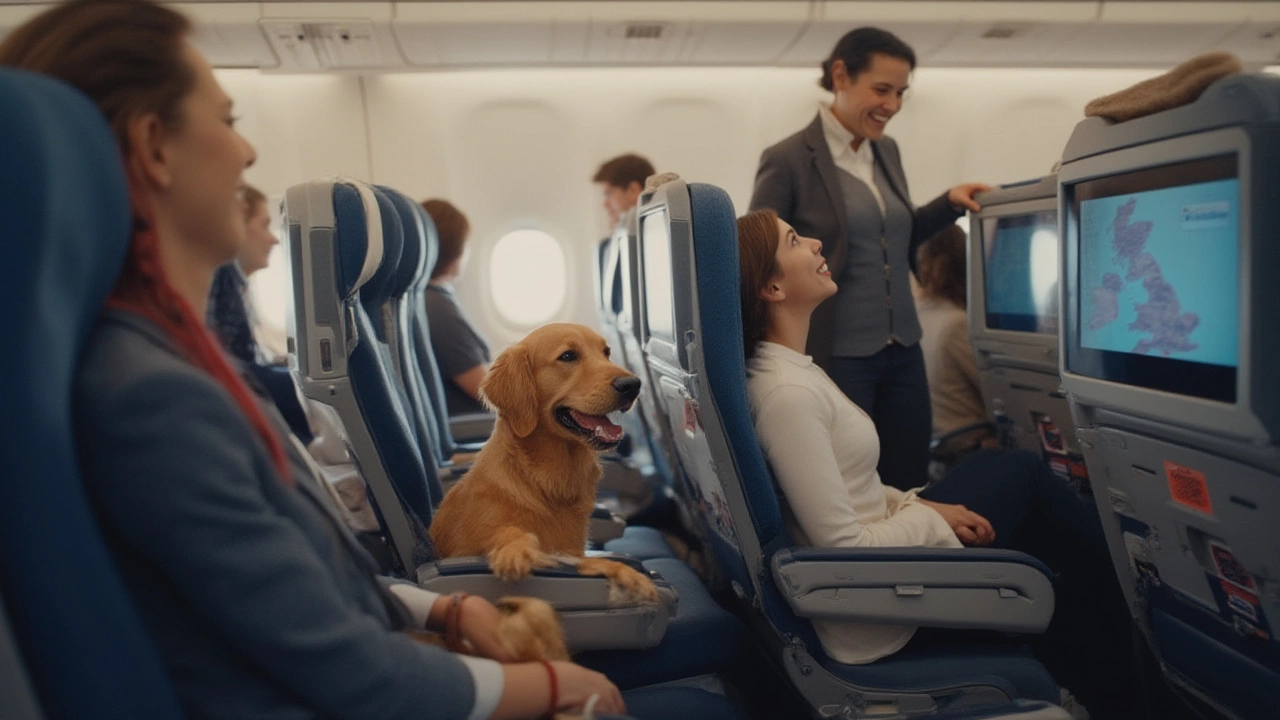Buy Dog Plane Seat: Simple Steps to Fly Your Pup Stress‑Free
Got a vacation coming up and your dog is part of the family? Booking a seat for your dog might sound tricky, but it’s actually pretty straightforward once you know what to look for. Below you’ll find the exact steps to buy a dog plane seat, plus the most common airline rules and a handful of handy tips to keep both you and your pooch comfy in the cabin.
Check Airline Policies Before You Book
Every airline has its own set of rules about pets in the cabin. Some let dogs sit on your lap for a small fee, while others require a dedicated seat for the carrier. Start by visiting the airline’s pet policy page or giving them a quick call. Look for answers to these questions:
- Is my dog’s breed allowed in the cabin?
- What size carrier fits under the seat?
- How much does a pet seat cost?
- Do I need a health certificate?
Knowing the answers early saves you a lot of last‑minute scrambling.
How to Actually Buy the Seat
When you’re ready to book, follow these steps:
- Choose your flight. Pick a non‑stop route if possible – fewer take‑offs means less stress for your dog.
- Add the pet. Most airline booking sites have a “Add pet” button after you select a seat. Click it and tell them your dog’s weight and carrier dimensions.
- Pay the pet fee. Fees range from £20 to £50 per flight, but some airlines charge extra for a full seat if the carrier is large.
- Confirm the reservation. You’ll receive a pet confirmation number. Keep it handy for check‑in.
If the airline’s website won’t let you add a pet, call their reservations desk. Agents can manually lock a seat and process the fee.
Pro tip: Book your pet’s spot as early as possible. Seats for carriers fill up quickly, especially on popular routes.
Now that the seat is secured, the next part is prepping your dog for the flight.
Prep Your Pup for a Comfortable Cabin Ride
First, pick a carrier that meets the airline’s size limits but still gives your dog room to turn around. Soft-sided carriers are lighter and easier to squeeze under the seat. Add a familiar blanket and a chew toy to calm nerves.
Second, get a vet check‑up at least a week before travel. A clean bill of health and up‑to‑date vaccinations are usually required.
Third, feed your dog a light meal 3‑4 hours before take‑off and give a bathroom break right before you head to the gate. This reduces the chance of accidents while you’re in the air.
Finally, practice short trips in the carrier around the house. Let your dog get used to the feel of the carrier being moved and the sounds of traffic. The more familiar it is, the calmer your dog will be on the plane.
When you get to the airport, arrive at least two hours early for domestic flights and three hours for international trips. This gives you enough time to check in, drop off the carrier, and walk your dog to the gate.
At the gate, keep the carrier closed until you board, then place it under the seat in front of you. Keep the flap up so you can check on your dog during the flight, but don’t open it unless the crew asks you to.
During the flight, stay relaxed. Talk to your dog in a calm voice and give gentle pats through the carrier. If your pup whines, a soft chew toy or a treat can help distract them.
Landing can be the most stressful part. As soon as the seatbelt sign turns off, open the carrier and let your dog stretch their legs. Most airlines have a pet relief area near the baggage claim – take advantage of it before you collect your luggage.
Following these steps makes buying a dog plane seat feel like a normal part of travel planning. You’ll avoid surprise fees, keep your dog safe, and arrive at your destination ready for the adventure ahead.
Posted By Bryndle Redding On 22 Jul 2025 Comments (0)
Can I Buy My Dog a Plane Seat? Rules, Tips, and Airline Policies for Dog Owners
Unpack what it really looks like to buy your dog a seat on a plane: costs, rules, real airline policies, surprising facts, and first-hand tips for jet-setting pups.
READ MORE